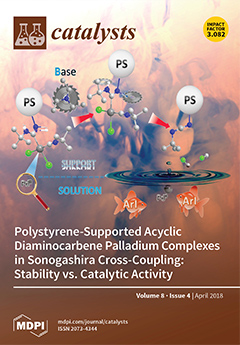We have examined the catalytic role of H
2O molecules in the oxidation of CH
3OH in water by quantum chemical simulations. A CH
3OH is decomposed into molecules, a formaldehyde and an H
2, in water, while it
[...] Read more.
We have examined the catalytic role of H
2O molecules in the oxidation of CH
3OH in water by quantum chemical simulations. A CH
3OH is decomposed into molecules, a formaldehyde and an H
2, in water, while it is converted into radicals in a gas phase reaction at a high temperature. H
2O molecules located near a CH
3OH form a first hydration shell and act as catalyst for the oxidation of CH
3OH in water. The oxidation process of a CH
3OH in water begins when a proton is delivered to a neighbor H
2O molecule from a hydroxyl of a CH
3OH. The H
2O molecule transfers an extra proton to a second H
2O molecule, a proton of which is combined with a proton detached from the methyl of the CH
3OH, forming an H
2. The energy barrier to decompose a CH
3OH is significantly reduced by the catalyst of H
2O molecules in water. A cluster of H
2O molecules arise in water as an enclosed chain of hydrogen bonds between H
2O molecules. A proton is transferred with less energy between H
2O molecules within a cluster of H
2O molecules. A cluster of five H
2O molecules further reduces the energy barrier. The calculated oxidation rate of CH
3OH with the transition state theory agrees well with that determined by experiments.
Full article





